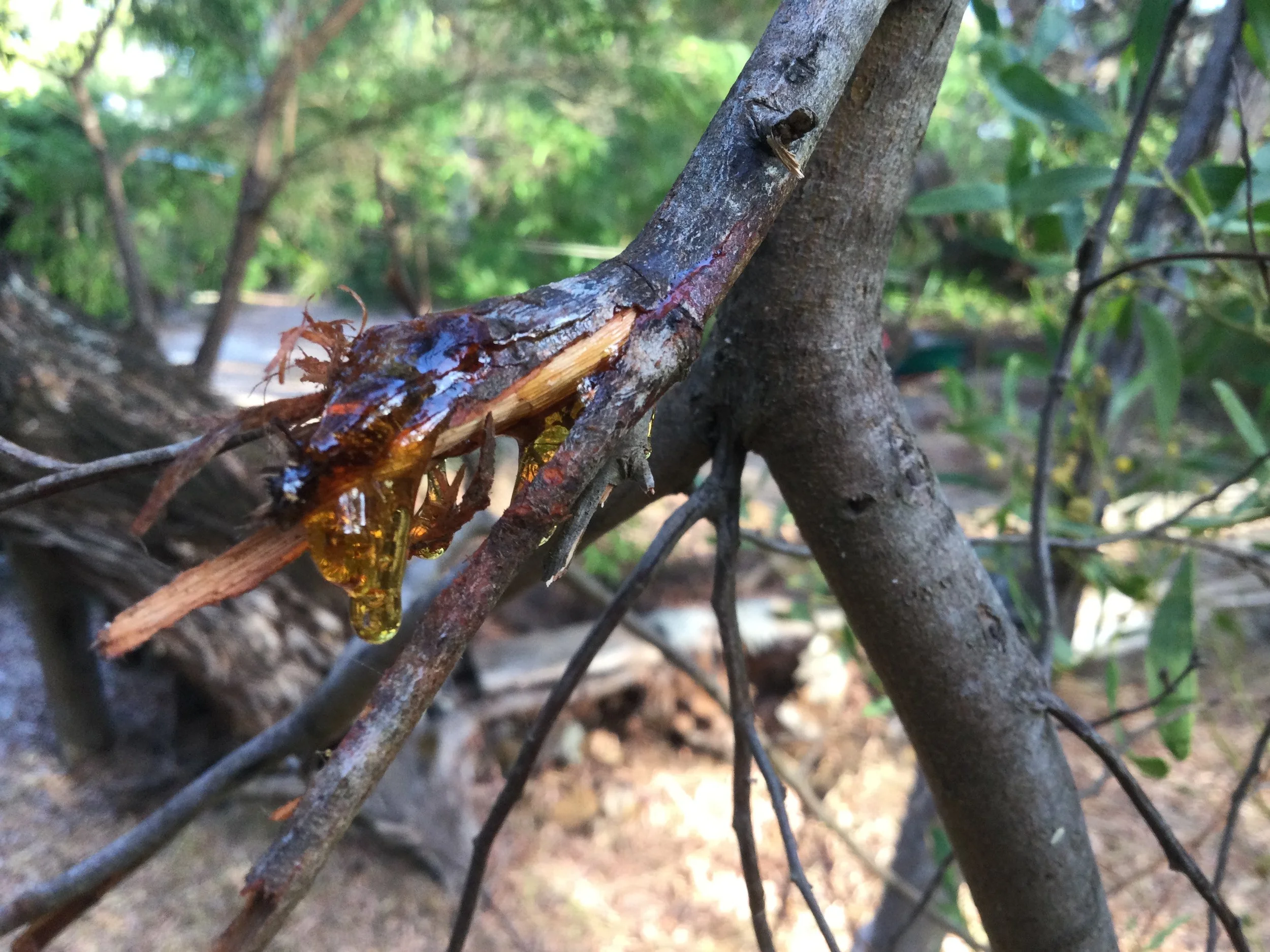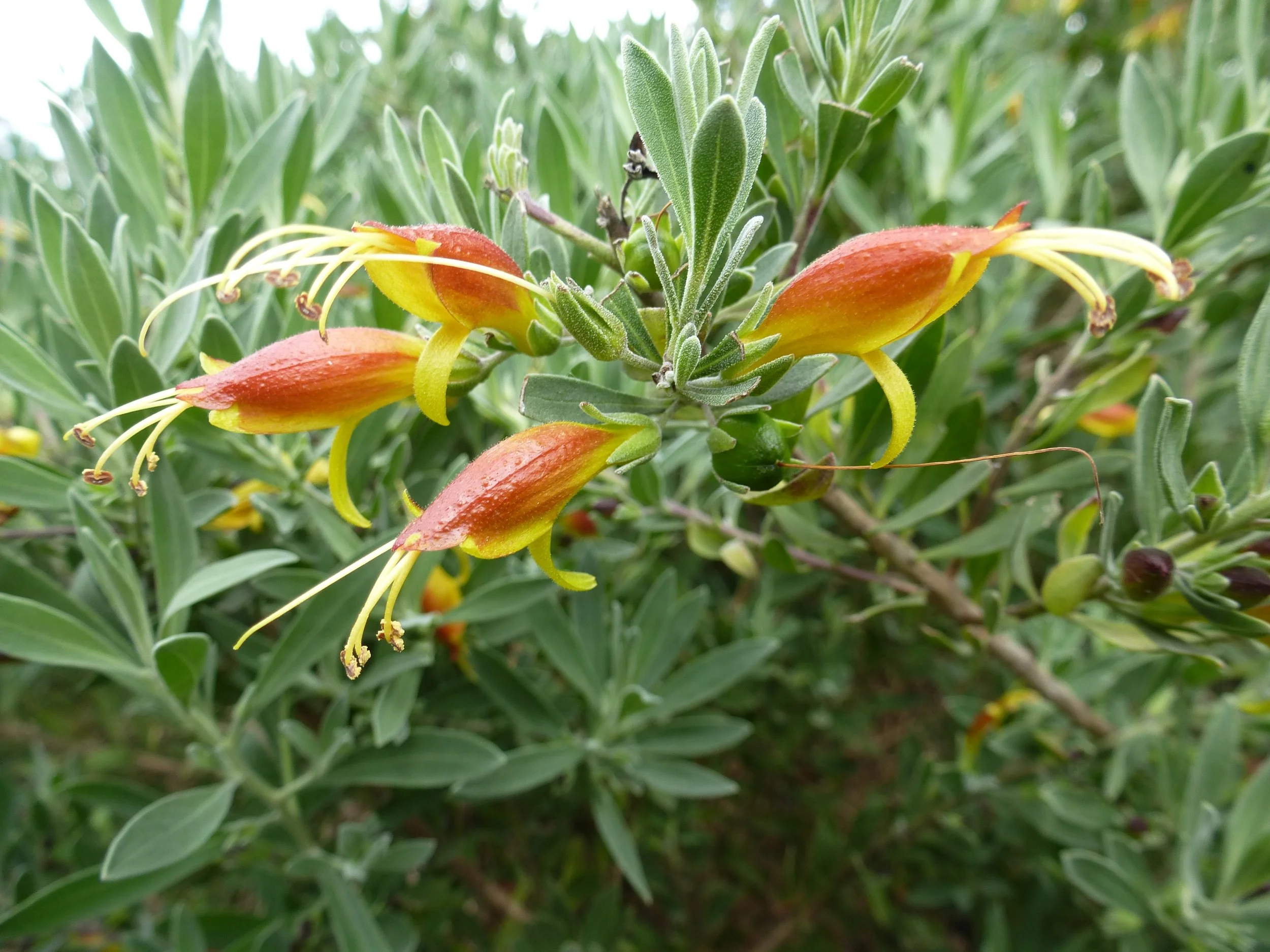On Country
Flowers
Flowers are the factories that make the seeds.
NAMING PLANTS THE NOONGAR WAY
The naming of plants, and their parts, may describe any aspect of the plant - its edibility, habitat, optimal time for digging, life-cycle stage, nutritive value, or other usefulness, such as medicine, artefact, shelter, or bodily decoration. Sometimes the Indigenous name reflects spiritual, totemic and mythological significance.
Banksia, as an example:
A Noongar word for banksia, mangat or mangitch refers to the sweet taste of banksia nectar. Another word used to describe banksia includes nugoo and boolgalla with nugoo referring to how flowers were steeped in water to make a sweet drink, and boolgalla translating as many fires (boola, many or plenty + galla or kalla, fire) and refers to the usefulness of the flower nuts which were carried as smouldering f ire sticks, especially by women under their booka (kangaroo skin cloak) for making fire.
Activity
Examine Bush Flowers:
Seek help from Aboriginal educators to accompany the class and ask them to share their knowledge about how flowers were a source of food and medicine [1]. All parts of plants were prepared and eaten, including:
• gum (bush lolly), kalyang exuded from branches of the Jam tree.
• Yvonne Kickett, a Ballardong woman says ... I remember walking for miles with my older sister Teresa, walking out as far as we can to get as much gum as we can… we would pick as much as we can and share it with the kids at home. Now I have taught my grandchild what it is to go out and get gum and how important it is to keep the culture alive...” From: www.wheatbeltnrm.org.au
• tuberous roots. Warrany from Yam, mardja from Bloodroots, karno from the Native Potato, and roots from the Blue Flax Lily (mangard).
• nectar is profuse in Wheatbelt plants. The concentration of sugar in nectars has been measured as approximately 23% in banksias, up to 40% in some eucalypts, and as high as 50% in the Tar Bush (Eremophila glabra).
• flowers were sucked to extract nectar, or steeped in water to make kep (kapi), or allowed to ferment to make karwong or karwoon kap. Flowers commonly used were banksias, hakeas, grevilleas, calothamnus, bottlebrush and marri flowers. (Ballardong elder, Kevin Fitzgerald pers.com.)
Flowering in the Wheatbelt bush is spectacular during djilba (August and September).
There are flowers that have petals, such as:
• Solanums, with their vivid blue petals
• Eremophilas, with their tube-shaped petals
Some flowers have no obvious petals.
Banksias, hakeas, calothamnus and bottlebrush have economized on putting their energy into petals; instead, they have maximised the reproductive parts (pistil and stamens) and arranged them into a flowering spike.
• A Banksia grandis, for example, has up to 2000 f lowers on a single flowering spike. Such a structure has obvious advantages for the plant to make a large number of seeds.
• In a further attempt, these ‘non-petalled’ species have also maximised their chances of attracting a pollinator, by producing copious amounts of a sweet-smelling nectar. Hence, their rich source as an Aboriginal drink from the bush.
• Students may take their science notebooks On Country, and draw a flowering spike, as an introduction to the painting style, plein air.
• Drawing the flower of these species is best done in the classroom.
Banksia grandis, flowering spike
Jam Tree Gum
Solanum sp.
Tar Bush



